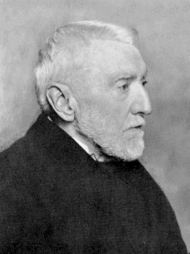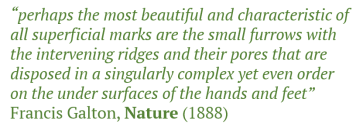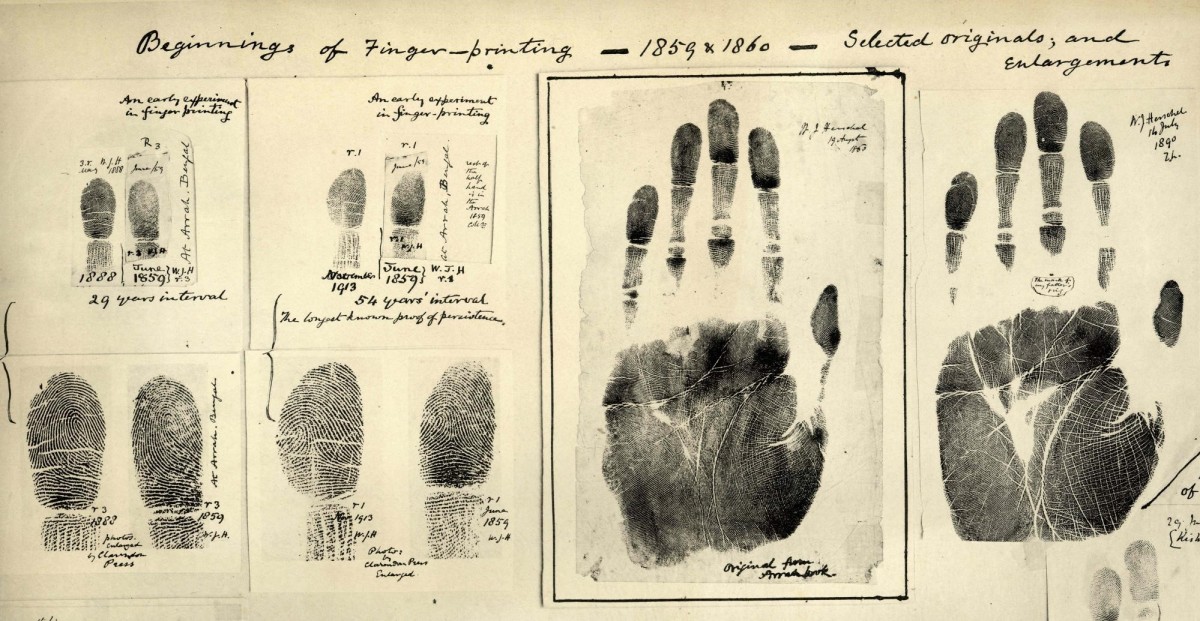Your fingerprints are unique. They are yours, and yours alone. They can open doors, unlock your phone, let you into a country, or even just into a theme park. They are your personal identifier. Although there are many uses for fingerprints, perhaps the one which has most captured the public’s imagination is their use in forensic science. After all, how many criminals in stories wouldn’t have been caught without a careless fingerprint left at the scene. Because of this, it is quite fitting that this is also one of its first recorded uses.

In ancient China uniqueness of a person’s fingerprint was well known. During during the Qin dynasty (221-206BC), there is evidence that officials used hand and foot prints to identify the suspect of a burglary. There are also ancient clay seals surviving from what are believed to be official contracts baring impressions of both parties’ fingers, presumably as a form of signature. Unfortunately, as with many things, this knowledge fell into obscurity for over 2000 years until Dr Henry Faulds, a Scottish missionary, writer, doctor and scientist, had his interest peeked after noticing fingerprints of ancient potters left in recently excavated pots. After studying the fingerprints of his students, he realized that each one had distinguishable characteristics and formed the hypothesis that no two fingerprints are the same. He later used this idea in the late 1800’s to clear the name of an innocent man who was the suspect of a break in at his hospital. Realizing its potential, he contacted the Metropolitan police in the UK to encourage the use of this technique at crime scene. Faulds also published his ideas in Nature in 1880 and suggested ways in which it could be used to catch criminals, even going as far as suggesting how this could be done.
Unfortunately, the Metropolitan police didn’t bite, but the idea eventually reached Charles Darwin’s cousin, Sir Francis Galton. Galton further developed the idea into what is now known as Dactyloscopy (the system of fingerprint identification) and published a book on the forensic science of fingerprints.
After its early adoption and refinement in the late 1890’s by Sir Edward Henry, Galton’s friend and police chief of Bengal, it was steadily adopted by police forces around the world until the present day, where it is now a staple of crime scene investigation

Despite the use of fingerprints in forensics for over 100 years, the mechanisms that cause the formation of fingerprints are not completely understood. It’s clear that the basis for the fingerprints uniqueness is not genetic, as identical twins have different fingerprints. In addition, the pattern of a fingerprint does not change during your life, suggesting that it must be due to factors that happen during development. This appears to be the case, with numerous factors including the blood nutrition of mother, hormone levels, position of fetus, composition of amniotic fluid as well as movement of the fetus in the womb, all found to have an impact the development of the fingerprint.
A 2004 study developed a model that suggested that one of the main impacts on the formation of your fingerprints is the differing growth rate between the layers of skin. Your skin is made up of three layers, the epidermis, basal layer and inner dermis. During the 10th week of gestation, when the fetus is about 80mm long, the basal layer is growing faster than the two other layers, resulting in kinking and buckling of this layer under the surface. Their model predicted the formation of the common features of fingerprints, such as the pattern of groves and ridges, suggesting that this may be the main driver of its formation. They suggest that that this mechanism, in combination with the other factors that occur because of the chaotic and variable developmental environment, all lead to the formation of your unique fingerprint.
After the 17th week of gestation, your fingerprints are formed and, they are permanent. Every scar and all damage to your fingerprints throughout your life simply becomes a new detail, making it more unique. As you age the elasticity of skin will lessens so that the detail in the fingerprint may be difficult to capture, but it’ll still be there. I’m afraid that unlike an ill-advised tattoo, or an embarrassing first name, you’re stuck with this one for life.



Interesting post!
LikeLiked by 2 people
Nice informative post.
LikeLiked by 2 people
Extremely enjoyable post. You seem passionate and knowledgeable.
Cheers,
Ben.
LikeLiked by 1 person
Thanks! Glad you liked it!
LikeLike